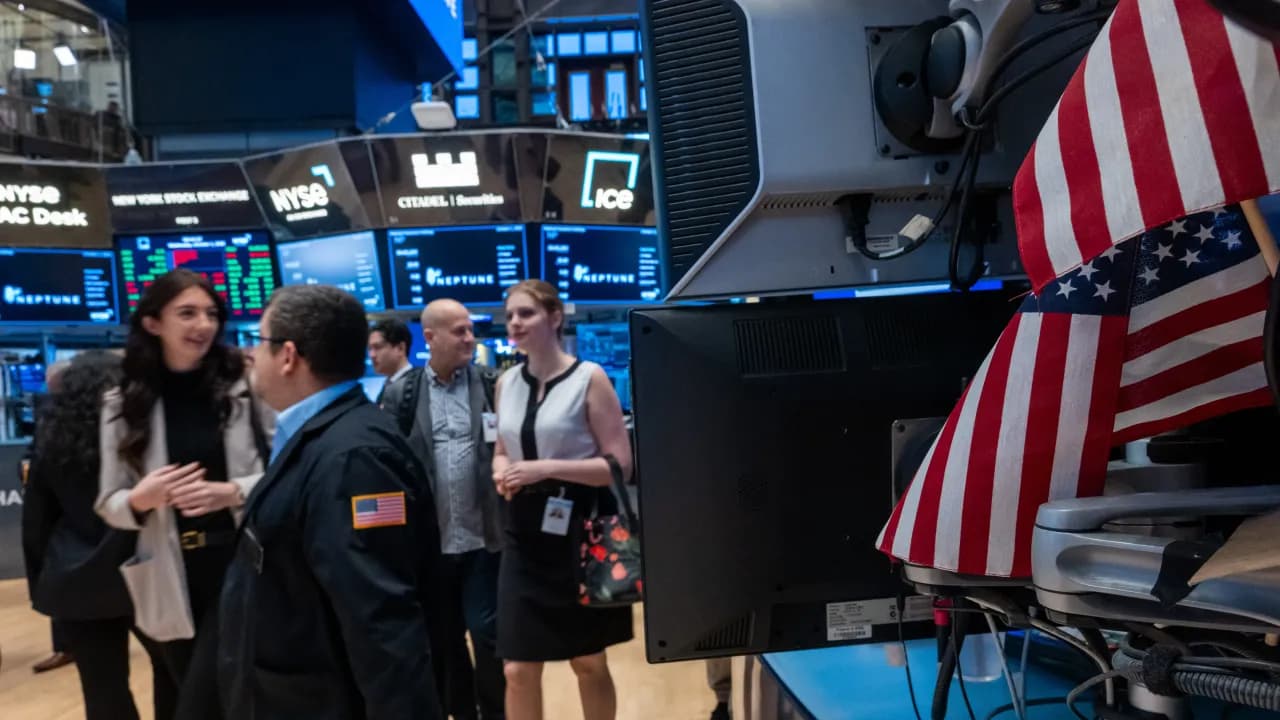- Earnings from IBM (IBM) and Tesla (TSLA) have largely disappointed investors.
- Fed Governor Michael Barr is due to make a public appearance at 10:25 a.m. ET.
- Morgan Stanley Chief Equity Strategist Mike Wilson sees a bit of frothiness in equity markets at the moment.
U.S. stocks are heading for a mixed start on Thursday after the major indices settled the previous session firmly in the red. Barring a couple of catalysts on the economic front, the market is left to the mercy of the ongoing earnings news flow as it struggles to take its next step amid the geopolitical challenges.
IBM (IBM) and Tesla (TSLA), two key earnings the market looked forward to, disappointed investors. European chipmaker STMicroelectronics (STM) lowered its annual forecast, blaming the predicament on a softer auto and industrial machinery end-market backdrop.
Energy stocks could be in the spotlight on Thursday as U.S. President Donald Trump announced sanctions against Russian oil giants. After Wednesday’s 1.2% rally, the WTI-grade light-sweet crude rose about 3.75% early Thursday, topping the $60 mark for the first time in about two weeks.
How Futures Are Trading
As of 3:10 a.m. ET on Thursday, the Nasdaq 100 futures rose 0.26% and the S&P 500 futures added 0.17%, while the Russell 2000 futures jumped 0.56%. On the other hand, the Dow futures slipped 0.05%.
On Stocktwits, retail sentiment toward the SPDR S&P 500 ETF (SPY), an exchange-traded fund that tracks the S&P 500 Index, ticked up slightly and yet was ‘bearish’ heading into Thursday’s session. Retail, however, continued to hold an ‘extremely bearish’ view on the Invesco QQQ Trust (QQQ) ETF, which tracks the Nasdaq 100 Index. The message volume on both streams remained ‘high.’
How Markets Traded On Wednesday
Stocks put up a lackadaisical performance on Wednesday as traders reacted to mixed earnings reports, the U.S.-China trade tensions, and the continuing government shutdown. Consumer discretionary, industrial, IT, and communication stocks fell sharply, while energy stocks saw noteworthy buying.
The QQQ and SPY ETFs declined 0.96% and 0.52%, respectively. ETF ended flat. The iShares Russell 2000 ETF (IWM) slumped 1.48%, reflecting the weakness in the small-cap space, while the SPDR Dow Jones Industrial Average ETF Trust (DIA) pulled back by 0.73% as the Dow Jones Industrial Average retreated from a record.
Morgan Stanley Chief Equity Strategist Mike Wilson sees a bit of frothiness in the equity markets at the moment. Therefore, a 10%-15% correction in the S&P 500 is not only possible but would be normal at this stage of a new bull market, he said. The strategist highlighted the escalation in U.S.-China trade tensions, increased stress in funding markets, and the rolling over of Morgan Stanley’s earnings revision breadth metric after its historic rise since April.
“Bottom line, I believe a new bull market began in April with a new rolling economic and earnings recovery that is now quite nascent,” he said, adding that “even new bull markets have corrections along the way, and that certain conditions argue we are at risk for the first tradable one since April.”
“Keep your powder dry in the near term for what should be a great buying opportunity, if it arrives,” he added.
Key Catalysts To Watch Out For
Among the key earnings due for the day are American Airlines (AAL), Alaska Air (ALK), AutoNation (AN), Dow (DOW), Hasbro (HAS), Honeywell (HON), Imax (IMAX), T-Mobile US (TMUS), Union Pacific (UNP), Baker Hughes (BKR), Ford Motor (F), Sallie Mae (SLM), VeriSign (VRSN) and Western Union (WU).
The National Association of Realtors’ existing home sales report for September is due at 10 a.m. ET, with the headline number expected to come in at a seasonally adjusted annual rate of 4.06 million units compared to 4 million units in August.
Federal Reserve Governor Michael Barr is due to make a public appearance at 10:25 a.m. ET.
How Other Markets Fared
Gold futures moved higher early Thursday, although trading notably below the all-time high of $4,398 seen last Friday. The 10-year U.S. Treasury note yield continued to languish below the 4% level. The U.S. dollar has firmed against most of its counterparts.
Most major Asian markets traded in a lackluster manner, with the Japanese Nikkei 225 retreating sharply and most others either declining or showing only modest strength. Geopolitical challenges and Wall Street’s negative performance overnight dented sentiment among domestic traders.
For updates and corrections, email newsroom[at]stocktwits[dot]com.<
